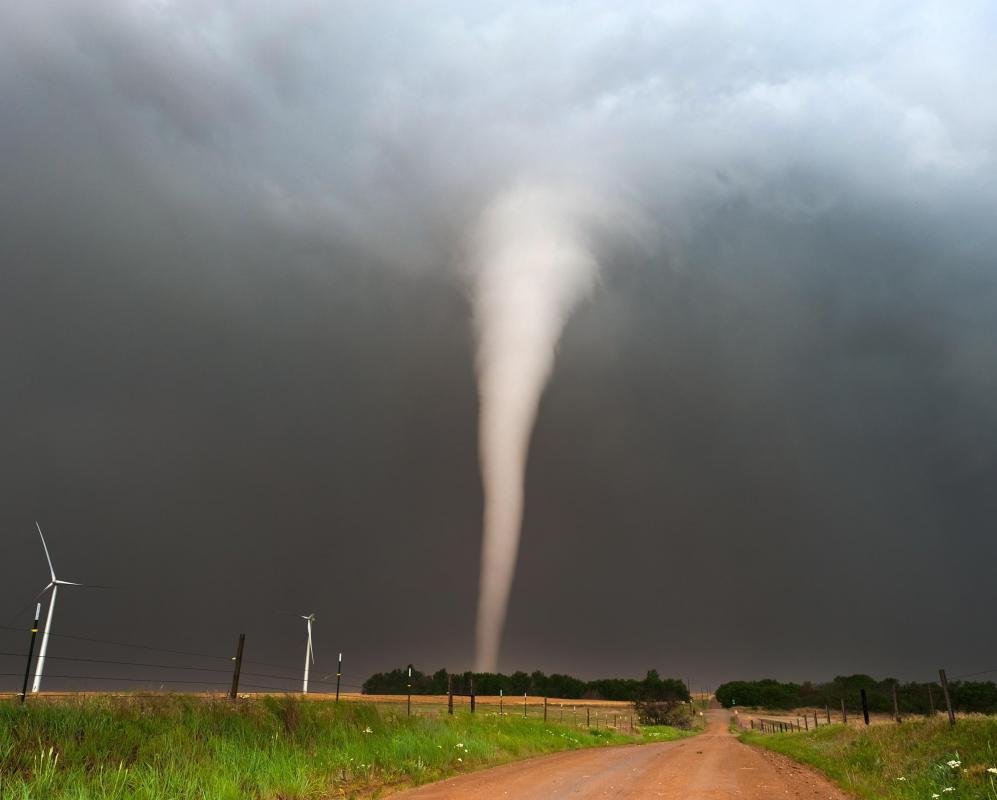At AllThingsNature, we're committed to delivering accurate, trustworthy information. Our expert-authored content is rigorously fact-checked and sourced from credible authorities. Discover how we uphold the highest standards in providing you with reliable knowledge.
What is a Severe Thunderstorm Warning?
Severe weather forecasting comes with a lingo all its own, and those who live in areas prone to severe weather know the language. Others may not. In order to understand what a severe thunderstorm warning is, it is helpful to know what a severe thunderstorm is. A severe thunderstorm is defined by the National Weather Service as having wind speeds of over 57 mph (98 km) and/or producing quarter-inch (.63 cm) size hail. These thunderstorms are usually part of a line of severe weather, and may be individual "supercells" or a long line of storms.
A severe thunderstorm warning means that a severe thunderstorm is moving into a particular area. It is defined as severe via radar detection. The local National Weather Service office issues a severe thunderstorm warning by county. They also issue advisories on the storm's intensity and movement.

Why issue a thunderstorm warning? Severe thunderstorms can produce many dangerous weather conditions. They are often associated with strong winds, their always-attendant cloud-to-ground lightning and hail. An ordinary thunderstorm may exhibit one or all of these characteristics, but at a much lower intensity. The public needs to be advised in order to take safety precautions, and a thunderstorm warning is broadcast on most media outlets.

The other reason to issue a severe thunderstorm warning is because severe thunderstorms can produce tornadoes with little or no advance warning. Most of the time, a meteorologist can detect circulation or rotation in a storm via radar, and based on the readings, can surmise whether a storm is likely to produce a tornado. However, thunderstorms being what they are, they can fool even a seasoned forecaster, and can put down a funnel cloud at a moment's notice. This is why trained spotters are always activated when severe weather is forecast. They serve as the National Weather Service's outside eyes and ears.

Pay attention when a severe thunderstorm warning is issued. Bring pets in and stay away from windows. Park the car in the carport or garage, since hail can damage an automobile. Most importantly, monitor the weather situation by watching television, listening to the radio, turning on a NOAA weather radio or accessing the Internet.
Frequently Asked Questions
What qualifies a thunderstorm as 'severe'?

A thunderstorm is classified as severe when it exhibits one or more of the following: hail one inch in diameter or larger, winds gusting in excess of 58 miles per hour, or a tornado. The National Weather Service issues warnings to alert the public when such dangerous conditions are imminent, prioritizing safety and preparedness.
How is a Severe Thunderstorm Warning issued?
Severe Thunderstorm Warnings are issued by the National Weather Service when severe weather has been reported by spotters or indicated by radar. Warnings are specific to the affected area and include information on the storm's location, movement, and potential impact, allowing residents to take immediate protective action.
What should I do if a Severe Thunderstorm Warning is issued?
Upon issuance of a Severe Thunderstorm Warning, seek shelter immediately, preferably in a sturdy building away from windows. Unplug electronics to prevent damage from power surges, and stay informed through a weather radio or local news for updates. Avoid outdoor activities until the storm passes and the warning is lifted.
Can a Severe Thunderstorm Warning include the risk of tornadoes?
Yes, while a Severe Thunderstorm Warning focuses on threats from hail and high winds, it can also indicate a tornado risk. If a storm shows signs of rotation, a Tornado Warning may be issued separately. Always listen closely to alerts during severe thunderstorms, as conditions can change rapidly.
How long does a Severe Thunderstorm Warning typically last?
The duration of a Severe Thunderstorm Warning varies depending on the storm's speed and trajectory but typically lasts for 30 to 60 minutes. The National Weather Service updates these warnings as needed to provide the most current information on the storm's development and potential hazards.
What is the difference between a Severe Thunderstorm Watch and a Warning?
A Severe Thunderstorm Watch means conditions are favorable for severe thunderstorms to develop, while a Warning indicates that a severe thunderstorm is occurring or imminent. Watches cover a broader area and last longer, urging people to be prepared, whereas Warnings require immediate action due to the presence of dangerous weather.
AS FEATURED ON:
AS FEATURED ON:














Discuss this Article
Post your comments